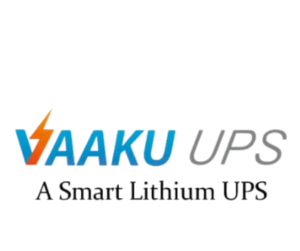Technologies of UPS

UPS MODE
Mains low cut : 180
Mains low cut recovery time :185
Mains high cut : 270
Mains high cut recovery time :265
Mains low cut : 180
Mains low cut recovery time : 185
Mains high cut : 270
Mains high cut recovery time : 265

Normal Mode
Mains low cut : 100
Mains low cut recovery time : >101
Mains high cut : 280
Mains high cut recovery time : <279
Mains low cut : 100
Mains low cut recovery time : >101
Mains high cut : 280
Mains high cut recovery time : <279

BATTERY CHARGING
Charging type : 15A
Battery discharge voltage: 10.8
Battery charge voltage : 14.2
Dc input range : 12.8
Charging type : 15A
Battery discharge voltage : 10.8
Battery charge voltage : 14.2
Dc input range : 12.8

OUTPUT PARAMETERS
Output frequency : 50Hz
Full load output voltage: <224
Output wave form : Pure Sine Wave
Short circuit protection : Fast Detecting
Over load: 110% 15 sec auto, recovery
Output frequency: 50Hz
Output Waveform: Pure Sine Wave
Full load output voltage: <224
Short circuit protection: Fast Detecting Over load: 110% 15 sec auto, recovery

INDICATIONS
Mains on /off : In Display
Inverter on /off: LED and Display
Charging on /off : In Display
Battery low : In Display
Over load : In Display
Short Circuit : In Display
Input Fuse Foil : In Display
Temperature Trip: In Display
Mode UPS/normal: LED and Display
Battery low : In Display
Over load : In Display
Short Circuit : In Display
Input Fuse Foil : In Display
Temperature Trip: In Display
Mains on/off : In Display
Charging on/off : In Display
Inverter on/off : LED and Display
Mode UPS/normal : LED and Display

PROTECTIONS
Overload
Short Circuit
Over Temparature
Mains Over Voltage
Mains Under Voltage
Battery Over Voltage
Battery Under Voltage
Reverse Power supply protection.
Input Voltage threshold protection.
Lithium-Ion Battery Inverters and Technologies of UPS
Introduction
In the realm of energy storage, lithium-ion battery inverters stand at the forefront of technological innovation. These sophisticated devices seamlessly integrate two critical functions: inverting direct current (DC) to alternating current (AC) and storing energy in high-capacity lithium-ion batteries. Let’s delve into the technologies of UPS and the intricacies of these remarkable systems.
The Core Components
- Inverter Functionality
- DC to AC Conversion: The primary role of a lithium-ion battery inverter is to convert the DC output from solar panels or other renewable sources into AC electricity suitable for household appliances and grid integration.
- Sine Wave Output: These inverters typically produce a pure sine wave output, ensuring compatibility with sensitive electronic devices.
- Lithium-Ion Battery Storage
- Energy Buffer: The heart of the system lies in the lithium-ion battery pack. These batteries store excess energy generated during sunny hours, acting as an energy buffer.
- High Energy Density: Lithium-ion batteries offer impressive energy density, allowing them to store substantial amounts of energy in a compact form.
- Battery Management Systems (BMS): sophisticated BMS ensure optimal battery performance, monitor cell health, and prevent overcharging or discharging.
Advantages of Lithium-Ion Battery Inverters
- Efficiency and fast response:
- Lithium-ion batteries exhibit high charge-discharge efficiency, minimizing energy losses during storage and retrieval.
- Rapid response time ensures seamless transitions between grid power and stored energy.
- Compact Design and Longevity:
- Compared to traditional lead-acid batteries, lithium-ion batteries are lightweight and space-efficient.
- A longer lifespan (approximately 10 years) reduces replacement frequency.
- Maintenance-Free Operation:
- Unlike lead-acid batteries, lithium-ion batteries require minimal maintenance, eliminating the need for regular checks.
- Scalability and Modular Design:
- These inverters can be easily scaled up by adding more battery modules, and adapting to changing energy demands.
Applications and Technologies of UPS
- Residential Solar Systems:
- Self-Consumption: Lithium-ion battery inverters store excess solar energy during the day, allowing homeowners to use it during nighttime or cloudy periods.
- Grid Support: These systems can provide frequency and voltage support to the grid, enhancing grid stability.
- Off-Grid Installations:
- Remote Areas: In regions without grid access, lithium-ion battery inverters power homes, cabins, and communication towers.
- Island Mode: They operate independently, ensuring uninterrupted electricity supply.
- Backup Power:
- Seamless Transition: During power outages, the inverter switches to battery mode, providing backup power to critical appliances.
- Critical Infrastructure: Hospitals, data centers, and emergency services rely on these systems for uninterrupted operation.
- Commercial and Industrial Use:
- Demand Management: Businesses optimize energy consumption, reduce peak demand charges, and enhance grid stability.
- Renewable Integration: Lithium-ion battery inverters facilitate renewable energy integration into the grid.
Conclusion
Lithium-ion battery inverters represent a pivotal shift toward sustainable energy storage. As we transition to cleaner sources, these systems play a crucial role in shaping a greener, more resilient future. In summary, these inverters are not mere devices; they are enablers of a cleaner, more efficient energy landscape.
For more details on our product, please click on Features of UPS.
